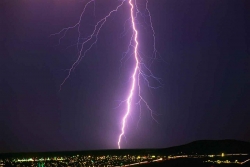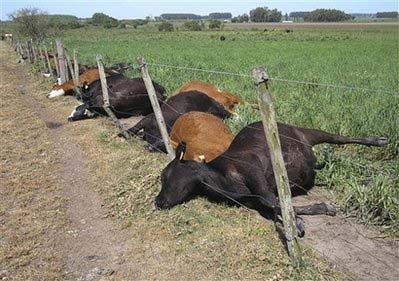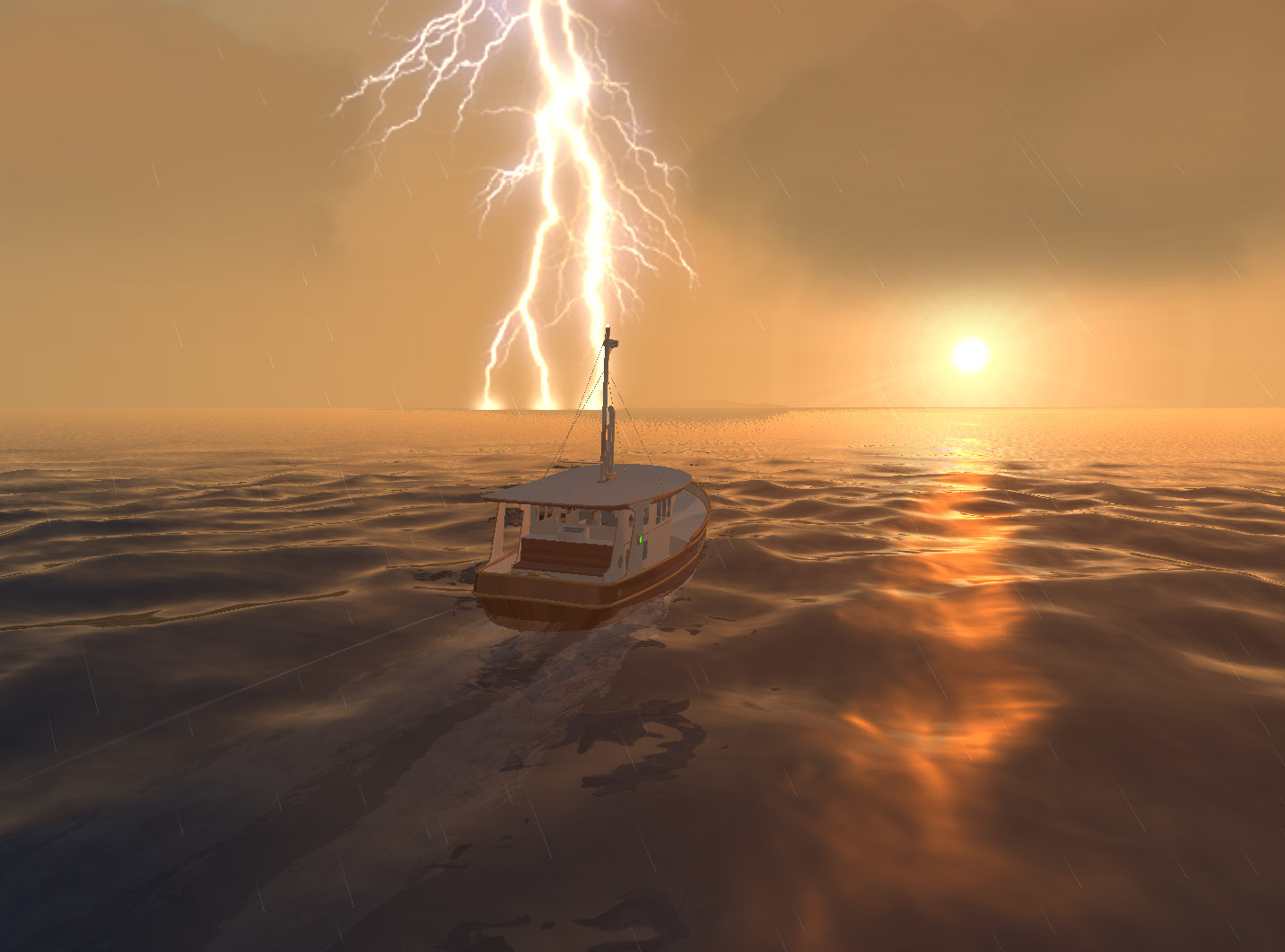Warning: What you don't know can be deadly
July 21, 2010 (San Diego’s East County) – Most East County residents know safety steps to take during an earthquake or wildfire, which are common in our area. But many are misinformed about dangers posed by lightning, a less common peril in our region. When a thunderstorm does strike, however, risks are substantial—and relying on myths can be deadly.
Lightning has caused deaths in California and in San Diego County. In East County, a man in Rancho Cuyamaca State Park was killed by lightning. Another local resident suffered neurological damage. Lightning strikes have caused many fires in East County. A Campo resident lost phone service due to lightning; in Alpine, a writer's computer was destroyed by a bolt.
Test your knowledge on lightning—the answers may shock you!
 LIGHTNING QUIZ
LIGHTNING QUIZ
1. Which kills the most people each year in the U.S.?
a. Hurricanes
b. Tornadoes
c. Lightning
2. How far can lightning travel?
a. 1 miles
b. 10 miles
c. Up to 50 miles

3. Once I hear thunder, how long until I should take shelter?
a. When less than 5 seconds elapses from hearing thunder to seeing lightning
b. As soon as you hear the first clap of thunder
c. Before you hear the first clap of thunder, if possible
4. Which of the following INDOOR activities are dangerous during a thunderstorm?
a. Working on a computer
b. Taking a shower or bath
c. Talking on the phone
d. All of the above
 5. What’s the best way to protect equipment such as computers and TVs from lightning damage?
5. What’s the best way to protect equipment such as computers and TVs from lightning damage?
a. Turn them off and unplug them
b. Install a surge protector
c. Add a ground fault protector on circuits near water or outdoors
d. All of the above
6. How can you help someone who has been hit by lightning?
a. Call 911 immediately. Perform CPR if they are unresponsive and mouth-to-mouth resuscitation if they are not breathing.
b. Observe them and do nothing if they are not showing signs of distress
c. Wait for professional help to avoid risk of electrocution.
7. Which of these is the safest place to take shelter?
a. A fully-enclosed car
b. A baseball dugout
c. A tent
8. If you’re outdoors and cannot get to a safe shelter or vehicle, what should you do?
a. Take shelter under a tree
b. Find a low spot and lie down
c. Avoid high ground or open fields, then crouch down
9. Which of the following activities can trigger lightning to strike?
a. Volcanic eruption
b. Flying aircraft
c. Powerful laser beams
d. All of the above
10. In 2008, 29% of people killed by lightning in the U.S. were:
a. On or near water
b. On a hilltop
c. In a vehicle
11. The deadliest lightning strike in history killed how many people?
a. 30
b. 300
c. 3,000
12. If riding a bicycle or motorcycle, what should you do?
a. Don’t worry; rubber tires will protect you
b. Pull over and drop to the ground
c. Take shelter indoors
ANSWERS
1c Lightning kills 58 people a year on average and injuries 300. Source: National Weather Service
2c You can be hit by lightning even under blue skies with no rain. Most strikes occur within 10 miles of thunderclouds. However “bolts from the blue” can strike 15 or more miles away and anvil lightning can strikes the ground over 50 miles from the thunderstorm. Lightning within clouds has traveled over 100 miles, making flying during a thunderstorm hazardous. Source: National Weather Service
3c By the time you hear thunder, the storm is already close enough for you to be hit by lightning. When thunderstorms are in the area it’s important to monitor the weather and follow this advice: When thunder roars, stay indoors! Don’t come out until 30 minutes after the last thunderclap. Source: National Weather Service
4d All of these activities are dangerous because lightning can travel through plumbing pipes, phone and electrical lines. If you must use a phone, a cordless is safest. Also stay away from windows. Source: National Weather Service
5d Installing surge protection equipment is the best way to protect your equipment, since you may not be home to unplug electronic items before lightning strikes. It’s wise to invest in surge protectors for expensive gear such as computers and TVs, though unplugging other electronic items during a storm may save you the headache of replacing items such as a toaster or microwave oven. Ground fault protectors near water are also important protections. Source: National Weather Service
6a A common myth is that lightning victims may carry electricity. This is false. Prompt medical attention is critical for all lightning strike victims, since cardiac arrest and death can occur without medical treatment. Lightning can also cause other serious health problems, such as burns or neurological damage. Source: Federal Emergency Management Agency (FEMA)
7a A fully-enclosed, parked metal car or van is the safest option if you cannot take shelter indoors; if driving a metal vehicle your safest option is to pull over and put hands in lap, since electricity can flow through a metal door handle, gear shift or steering wheel. Vehicles with a fiberglass shell are also unsafe, since lightning can flow through the vehicle—and you—if struck. Open-sided shelters such as baseball dugouts are unsafe. Other unsafe shelters are tents, sheds, greenhouses, open garages, patios, and picnic shelters. Unsafe vehicles include convertibles, golf carts, riding mowers, open cab construction vehicles, and boats without cabins. Source: National Weather Service
8c While all outdoor areas are dangerous during a thunderstorm, crouching down in the least risky area you can find is your best bet if shelter is not available. Tall items such as trees may attract lightning. In an open field, you become the tallest object. It’s a myth that lying down provides safety—in fact, if you are struck, you will have lighting flow through your entire body and death is more likely. Crouch down, put your feet together, tuck your head and cover your ears. Source: National Weather Service
9d All of these activities may trigger lightning. Source: National Weather Service
10a 29% of those killed were on or near water, which conducts electricity. Another dangerous location is under a tree—where 32% of those killed had taken shelter. In 2005, 68 dairy cows in Wales died when lightning struck a tree under which they were standing and flowed through the ground. Source: National Weather Service
11c In 1769, lightning struck a church in Brescia, Italy, igniting 100 tons of gunpower in its vaults. Theresulting explosion killed 3,000 people and destroy one-sixth of the city. (source: Wikipedia)
12c It’s a myth that rubber tires protect you from lightning. Most cars are safe due to the metal roof and sides which provide protection. There have been many cases of bicyclists and motorcyclists hit by lightning. Take shelter indoors! Source: National Weather Service







Recent comments